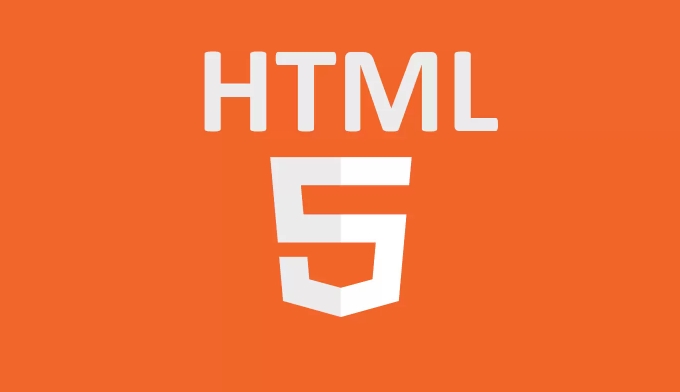Server-Sent Events (SSE) is a browser API defined in HTML5, which is used to implement real-time one-way data push from the server to the client. 1. It is based on the standard HTTP protocol, supports automatic reconnection and event stream formats, and allows messages to have meta information such as ID and type; 2. When using it, you need to create EventSource objects, and the server needs to set the correct MIME type text/event-stream and keep the connection uninterrupted; 3. Compared with WebSocket, SSE is lighter and simple to implement, and is suitable for server one-way push scenarios, such as notifications, status updates, etc., while WebSocket is suitable for scenarios that require two-way communication; 4. Common precautions include cross-domain configuration, message format specification, connection retention and performance optimization.

With the development of web applications, real-time data updates have become the standard configuration. For example, in scenarios such as stock market, chat messages, and notification push, the server needs to actively "push" new data to the client. The HTTP protocol itself is a request-response model. The traditional practice is that clients constantly poll, which is inefficient and resource-intensive. HTML5 introduces Server-Sent Events (SSE for short), providing a lightweight, HTTP-based server push mechanism to clients.

What are Server-Sent Events?
SSE is a browser API defined in HTML5 that allows the server to continuously send events and data to the client over a persistent HTTP connection. Its characteristics are one-way communication : server sends and client receives; it is not like WebSocket, bidirectional full-duplex communication. SSE is more suitable for scenarios where only server push is required and no frequent interaction is required.
It has several key features:

- Using standard HTTP protocol
- Automatic reconnect mechanism
- Support event stream format
- Messages with ID, type and other meta information
How to use SSE? Basic implementation steps
To use SSE in a web page, you mainly create an EventSource object in JavaScript and listen for messages from the server. Here is a simple example:
const eventSource = new EventSource('your-endpoint-url');
eventSource.addEventListener('message', function(event) {
console.log('Received message:', event.data);
});Several key points to pay attention to:

- The server must set the correct MIME type:
text/event-stream - The response header cannot be cached, otherwise the connection will be broken
- The message format must comply with the specification, for example, start with
data:
If the connection is interrupted, EventSource will automatically attempt to reconnect. You can also set a custom reconnection time, such as adding a retry: 5000 to the message, which means reconnection in 5 seconds.
What is the difference between SSE and WebSocket?
Although both are used for real-time communication, the applicable scenarios are different:
| characteristic | SSE | WebSocket |
|---|---|---|
| protocol | HTTP | Custom protocol (based on TCP) |
| direction | Server → Client (one-way) | Two-way |
| compatibility | Better (IE does not support) | Modern browsers generally support |
| Implement complexity | Simple | Relatively complex |
| Reconnect mechanism | Built-in automatic reconnection | Need to be manually implemented |
If you just want the server to push some data such as status updates, notifications, etc., SSE is a lighter and easier to integrate. However, if frequent two-way communication is required, such as online games and video conferencing, WebSocket is the appropriate solution.
Frequently Asked Questions and Precautions
Some details are easily overlooked when using SSE:
- Cross-domain problem : cookies are not included by default. If authentication is required, the server must set CORS and allow credentials.
- Message format : Each message must start with
data:and use two\nfor newlines. - Connection keeping : Do not close the connection too early, otherwise reconnection will be triggered.
- Performance optimization : Pushing too much data at once may affect the front-end processing speed. It is recommended to control the frequency or send it in batches.
For example, the server outputs a legitimate SSE message like this:
data: {"status": "online", "count": 123}
\n\nIf you see an error on the browser console saying "connection reset", it is likely that the server does not maintain the connection correctly or the format is written incorrectly.
Basically that's it. Although SSE is not as powerful as WebSocket, it is sufficient in many business scenarios, and it has lower development costs and easier maintenance.
The above is the detailed content of Understanding HTML5 Server-Sent Events (SSE). For more information, please follow other related articles on the PHP Chinese website!

Hot AI Tools

Undress AI Tool
Undress images for free

Undresser.AI Undress
AI-powered app for creating realistic nude photos

AI Clothes Remover
Online AI tool for removing clothes from photos.

Clothoff.io
AI clothes remover

Video Face Swap
Swap faces in any video effortlessly with our completely free AI face swap tool!

Hot Article

Hot Tools

Notepad++7.3.1
Easy-to-use and free code editor

SublimeText3 Chinese version
Chinese version, very easy to use

Zend Studio 13.0.1
Powerful PHP integrated development environment

Dreamweaver CS6
Visual web development tools

SublimeText3 Mac version
God-level code editing software (SublimeText3)

Hot Topics
 What Does H5 Refer To? Exploring the Context
Apr 12, 2025 am 12:03 AM
What Does H5 Refer To? Exploring the Context
Apr 12, 2025 am 12:03 AM
H5referstoHTML5,apivotaltechnologyinwebdevelopment.1)HTML5introducesnewelementsandAPIsforrich,dynamicwebapplications.2)Itsupportsmultimediawithoutplugins,enhancinguserexperienceacrossdevices.3)SemanticelementsimprovecontentstructureandSEO.4)H5'srespo
 HTML5 Interview Questions
Sep 04, 2024 pm 04:55 PM
HTML5 Interview Questions
Sep 04, 2024 pm 04:55 PM
HTML5 Interview Questions 1. What are HTML5 multimedia elements 2. What is canvas element 3. What is geolocation API 4. What are Web Workers
 Is h5 same as HTML5?
Apr 08, 2025 am 12:16 AM
Is h5 same as HTML5?
Apr 08, 2025 am 12:16 AM
"h5" and "HTML5" are the same in most cases, but they may have different meanings in certain specific scenarios. 1. "HTML5" is a W3C-defined standard that contains new tags and APIs. 2. "h5" is usually the abbreviation of HTML5, but in mobile development, it may refer to a framework based on HTML5. Understanding these differences helps to use these terms accurately in your project.
 Is H5 a Shorthand for HTML5? Exploring the Details
Apr 14, 2025 am 12:05 AM
Is H5 a Shorthand for HTML5? Exploring the Details
Apr 14, 2025 am 12:05 AM
H5 is not just the abbreviation of HTML5, it represents a wider modern web development technology ecosystem: 1. H5 includes HTML5, CSS3, JavaScript and related APIs and technologies; 2. It provides a richer, interactive and smooth user experience, and can run seamlessly on multiple devices; 3. Using the H5 technology stack, you can create responsive web pages and complex interactive functions.
 H5 and HTML5: Commonly Used Terms in Web Development
Apr 13, 2025 am 12:01 AM
H5 and HTML5: Commonly Used Terms in Web Development
Apr 13, 2025 am 12:01 AM
H5 and HTML5 refer to the same thing, namely HTML5. HTML5 is the fifth version of HTML, bringing new features such as semantic tags, multimedia support, canvas and graphics, offline storage and local storage, improving the expressiveness and interactivity of web pages.
 Understanding H5 Code: The Fundamentals of HTML5
Apr 17, 2025 am 12:08 AM
Understanding H5 Code: The Fundamentals of HTML5
Apr 17, 2025 am 12:08 AM
HTML5 is a key technology for building modern web pages, providing many new elements and features. 1. HTML5 introduces semantic elements such as, , etc., which enhances web page structure and SEO. 2. Support multimedia elements and embed media without plug-ins. 3. Forms enhance new input types and verification properties, simplifying the verification process. 4. Offer offline and local storage functions to improve web page performance and user experience.
 What does H5 mean?
Apr 04, 2025 am 12:10 AM
What does H5 mean?
Apr 04, 2025 am 12:10 AM
H5 is the abbreviation of HTML5 and is the fifth version of HTML. H5 enhances the structure and semantics of web pages, and introduces new features such as video, audio, canvas drawing and geolocation APIs, making web page development richer and more efficient.
 HTML5 and H5: Understanding the Common Usage
Apr 22, 2025 am 12:01 AM
HTML5 and H5: Understanding the Common Usage
Apr 22, 2025 am 12:01 AM
There is no difference between HTML5 and H5, which is the abbreviation of HTML5. 1.HTML5 is the fifth version of HTML, which enhances the multimedia and interactive functions of web pages. 2.H5 is often used to refer to HTML5-based mobile web pages or applications, and is suitable for various mobile devices.






